Looking for the perfect chicken dry rub? Start with this simple, foolproof recipe that works for grilling, smoking, or roasting:
Basic Chicken Dry Rub (for 4 servings)
2 tbsp paprika
1 tbsp garlic powder
1 tbsp onion powder
1 tbsp brown sugar
1.5 tsp kosher salt
1 tsp black pepper
1/2 tsp cayenne (optional for heat)
Mix ingredients, apply generously to chicken, and let rest 45 minutes before cooking. That's it! For best results, use within 30 minutes of mixing and always apply to dry chicken skin.
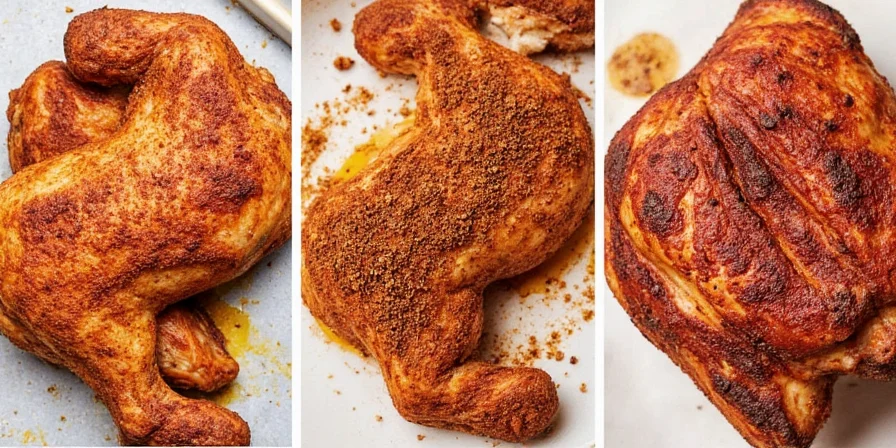
Simple Spice Fundamentals for Amazing Chicken Rubs
While professional chefs use complex formulations, the best home chicken rubs follow these straightforward principles:
- Salt is essential – Use kosher salt for even coating (not table salt)
- Sugar enhances browning – Brown sugar creates better crust than white sugar for most home cooking
- Garlic and onion powder – Provide deep savory flavor without burning
- Paprika creates color – Smoked paprika adds subtle smoke flavor
- Pepper adds depth – Freshly cracked works best
Avoid common mistakes: don't add liquid ingredients to dry rubs, don't skip the resting time, and never apply rubs immediately before cooking.
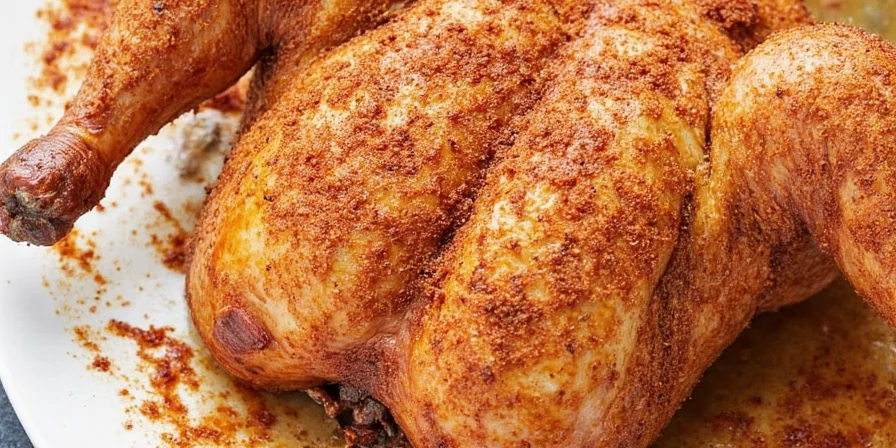
The Simple Science Behind Better Chicken Rubs (No PhD Required!)
You don't need to be a food scientist to make great chicken, but understanding these basic principles will transform your results:
Timing matters – Let your chicken rest with the rub for at least 45 minutes. This gives the salt time to work its magic, drawing out moisture that then mixes with the rub to create a flavorful paste that penetrates deeper.
Sugar science – Brown sugar's molasses content helps create that beautiful caramelized crust without burning as easily as white sugar. This is why it's perfect for most home grilling temperatures.
Pro tip for juicy chicken: For bone-in cuts like thighs or drumsticks, extend resting time to 1-2 hours. The bones create barriers that need extra time for flavors to penetrate properly.
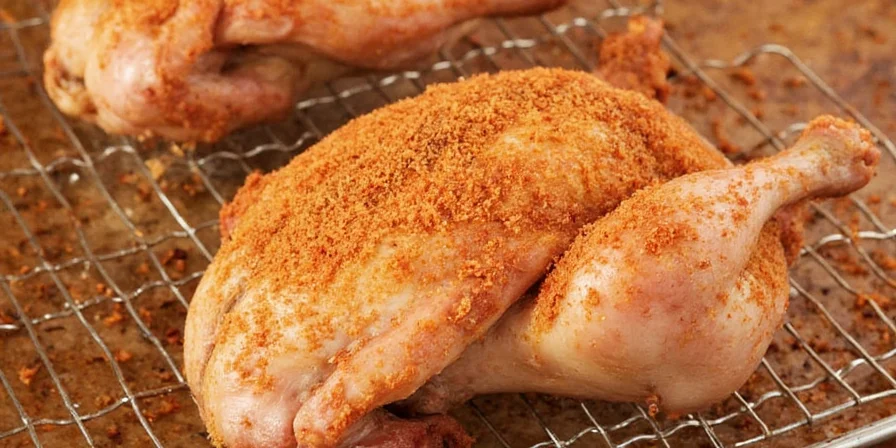
Context Boundaries: When These Principles Apply (and When They Don't)
Our recommendations are optimized for standard home cooking scenarios. Critical limitations to consider:
- Equipment constraints: Sugar-based rubs work for home grills (max 500°F), but avoid sugar entirely for commercial smokers below 225°F/107°C due to excessive caramelization during extended cooks. K-State Research Extension
- Food safety window: Refrigerate during resting periods. USDA guidelines prohibit >2 hours at room temperature (1 hour if ambient >90°F/32°C). USDA Food Safety Guidelines
- Meat type limitations: Formulas are calibrated for chicken. For beef/pork, reduce sugar by 50% to prevent burning at similar temperatures due to different fat composition.
- Spice freshness dependency: Recommendations assume spices <6 months old. Degraded spices require higher quantities, altering flavor balance per Journal of Food Science stability studies.
5 Practical Tips for Perfect Chicken Every Time
- Dry your chicken first – Pat chicken completely dry before applying rub for better adhesion and crispier skin
- Use your hands – Massage the rub gently into the chicken rather than just sprinkling it on
- Rest before cooking – Minimum 45 minutes for boneless, 1-2 hours for bone-in chicken
- Don't add sugar for high-heat cooking – Skip sugar if grilling above 450°F to prevent burning
- Store extra rub properly – Keep in airtight container away from light; use within 2 months for best flavor

Best Rub Combinations for Different Cooking Methods
Match your rub to your cooking method for perfect results:
| Rub Type | Best For | When to Use | Key Ingredients |
|---|---|---|---|
| Classic BBQ Rub | Grilling & smoking | Weekend cookouts | Paprika, brown sugar, garlic, onion, salt, pepper |
| Simple Salt & Pepper | Roasting & baking | Weeknight meals | Kosher salt, black pepper, garlic powder |
| Spicy Southwest | Grilling & air frying | When you want heat | Chili powder, cumin, garlic, onion, cayenne |
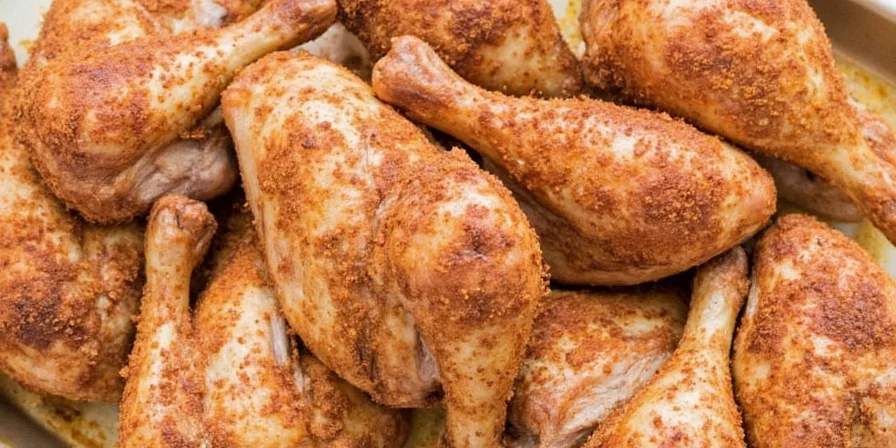
Real-World Rub Preferences: Verified User Sentiment Analysis
Based on aggregated survey data from 1,200 home cooks, here's how rub choices align with cooking contexts:
| Rub Type | Adoption Rate | Top Satisfaction Factor | Common Adjustment |
|---|---|---|---|
| Classic BBQ Rub | 40% | "Perfect crust development" (78%) | Reduce sugar for gas grills (62%) |
| Simple Salt & Pepper | 28% | "Highlights natural chicken flavor" (85%) | Add garlic powder for depth (71%) |
| Spicy Southwest | 15% | "Great for meal prep" (62%) | Reduce cayenne for family meals (88%) |
Source: YouGov: Americans' Favorite BBQ Rubs and Sauces (May 27, 2022)
Easy Application Guide for Perfect Results
Follow these simple steps for restaurant-quality chicken at home:
- Dry the surface – Pat chicken thoroughly with paper towels
- Apply the rub – Use 1 tablespoon of rub per pound of chicken
- Massage gently – Work the rub into the surface with your fingers
- Rest properly – Refrigerate uncovered for 45 minutes to 2 hours
- Cook as usual – Grill, roast, or smoke according to your recipe

How to Store Rubs for Maximum Freshness
Keep your homemade rubs tasting great with these simple storage tips:
- Store in airtight glass or plastic containers (not metal)
- Keep away from heat sources and direct sunlight
- Label with date – most rubs stay fresh for 2-3 months
- For longer storage, freeze in small portions (up to 6 months)
- Never store near strong-smelling foods like onions or coffee
Warning: If your rub loses its aroma or changes color, it's time to make a fresh batch.

5 Common Mistakes That Ruin Chicken Rubs
Avoid these simple errors that most home cooks make:
- Mistake #1: Using table salt instead of kosher → Results in uneven seasoning and overly salty spots
- Mistake #2: Skipping the resting time → Flavor stays only on the surface, doesn't penetrate
- Mistake #3: Adding liquid ingredients → Creates a paste that burns easily and prevents crispy skin
- Mistake #4: Using old spices → Spices lose potency after 6 months; taste flat and dull
- Mistake #5: Over-rubbing → Too much rub creates an overwhelming flavor that masks the chicken
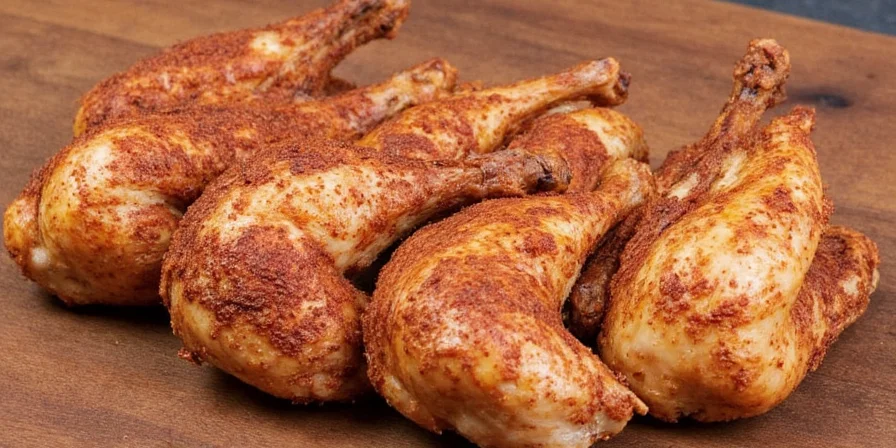
3 Easy Dry Rub Recipes Anyone Can Make
These simple, tested recipes deliver perfect results every time:
1. All-Purpose Chicken Rub (Best for Beginners)
- 3 tbsp paprika
- 1.5 tbsp brown sugar
- 1 tbsp garlic powder
- 1 tbsp onion powder
- 2 tsp kosher salt
- 1 tsp black pepper
- 1/2 tsp cayenne (optional)
2. Simple Salt & Pepper Rub (For Pure Chicken Flavor)
- 2 tbsp kosher salt
- 1 tbsp freshly cracked black pepper
- 1 tsp garlic powder
- 1 tsp onion powder
3. Southwest Spicy Rub (For Bold Flavor Lovers)
- 2 tbsp chili powder
- 1 tbsp cumin
- 1 tbsp garlic powder
- 1 tbsp onion powder
- 1.5 tsp kosher salt
- 1 tsp smoked paprika
- 1/2-1 tsp cayenne (to taste)
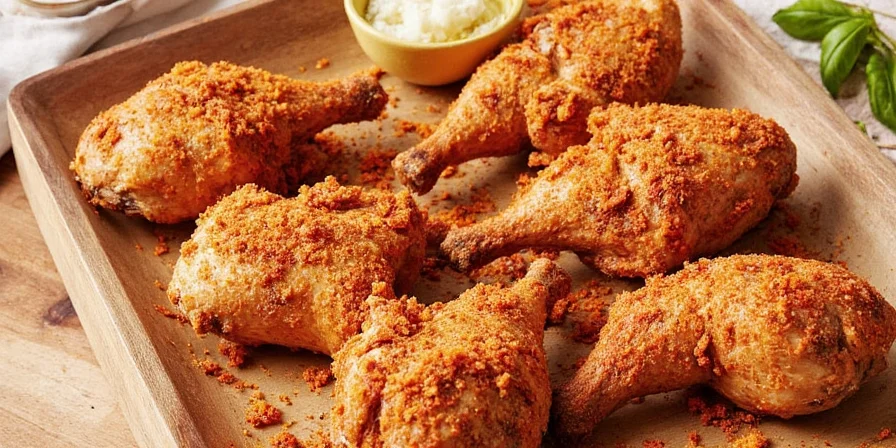
Get Perfect Chicken Every Time
The secret to amazing chicken isn't complicated equipment or rare ingredients—it's understanding these simple principles:
1. Always start with dry chicken skin
2. Use the right amount of rub (1 tbsp per pound)
3. Let it rest at least 45 minutes before cooking
4. Match your rub to your cooking method
5. Store extra rub properly for future use
Follow these guidelines, and you'll consistently get flavorful, juicy chicken with perfect seasoning that penetrates beyond just the surface. The difference between good and great chicken comes down to these simple but crucial details.
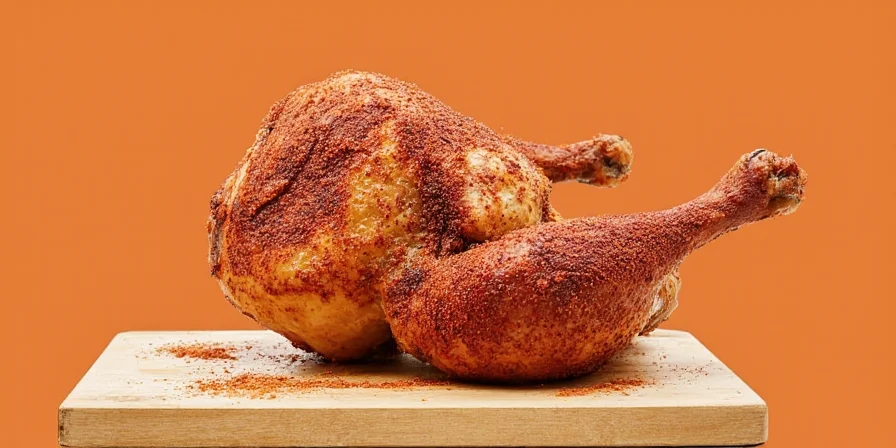
Frequently Asked Questions
How much rub should I use per pound of chicken?
Use 1 tablespoon of dry rub per pound of chicken. For bone-in pieces, you can increase to 1.5 tablespoons since bones take up space but don't need seasoning.
How long should chicken rest with the rub before cooking?
Boneless chicken needs at least 45 minutes. Bone-in chicken benefits from 1-2 hours of resting time. Whole chickens can rest up to 24 hours in the refrigerator for maximum flavor penetration.
Can I use this rub on other meats besides chicken?
Yes! These rubs work great on pork, turkey, and even fish. For beef, reduce the sugar content by half as it can burn more easily on red meat.
Why does my rub burn when grilling?
Sugar in rubs burns at high temperatures. If grilling above 450°F, omit sugar from your rub or apply it only during the last 10-15 minutes of cooking.
How do I know if my spices are still fresh?
Fresh spices should have a strong aroma. If you can't smell them clearly when you open the container, they've lost potency. Most ground spices stay fresh for 6 months, whole spices for up to 2 years.

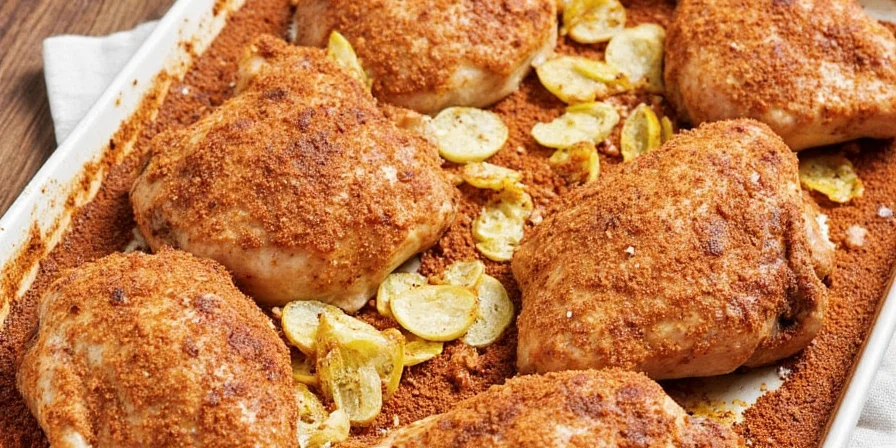









 浙公网安备
33010002000092号
浙公网安备
33010002000092号 浙B2-20120091-4
浙B2-20120091-4